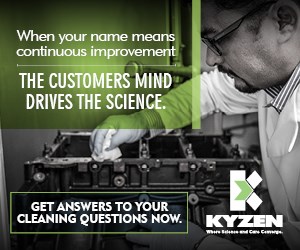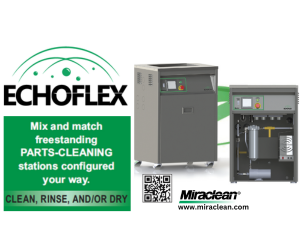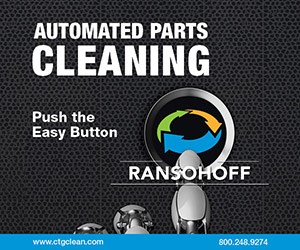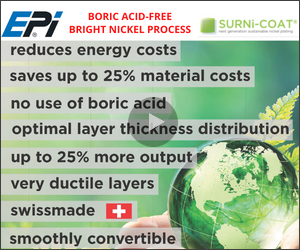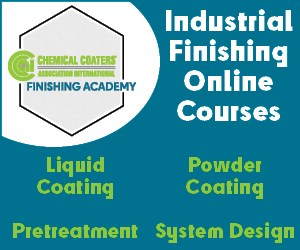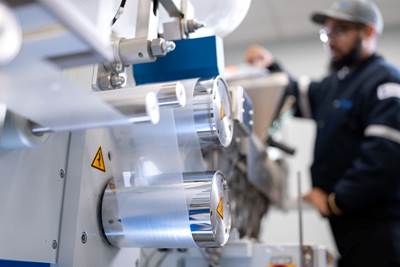Painting Q&A: Clearcoat Scratch Resistance
Can increasing the clearcoat hardness to improve scratch resistance?
Q. My customer wants to have improved scratch resistance of the clearcoat. Can the clearcoat hardness just be increased?
A. Increased hardness is one way of improving scratch resistance. However, it does not work very well for organic coatings.
First, understand exactly what your customer means by improved scratch resistance. In particular, how is the finish being scratched? Scratch resistance can be used to describe anything from ultra-fine scratches, like polishing marks and fine scratches due to dirt and debris, to large scale damage such as finger nail scrapes around door handles. Furthermore, it can relate to surface defects or much deeper damage such as abrasion down to metal (such as that found under bedliners) or scrapes down to metal from shopping carts, or keys. Another common defect is marring defects from objects that are pressed against the finish. Each of these types of scratching can respond differently to the film properties. The best coating for one type of failure may not be the best for another type of failure. There are many types of scratch tests and you must choose the test that best replicates the size of the damaging object, the force with which that object is being pushed into the finish and other factors.
With the question of hardness, consider Moh’s hardness scale for materials. This scale was developed to grade and identify minerals and is based on a material’s inherent hardness. Here diamond is near the top at 10.0. Corundum, a form of aluminum oxide, is 9.0 and silica can range from 5–7 depending on the crystal structure. Both materials are common in everyday dirt and debris. Metals can range from 3–5 or as high as 8 for some steels. With a sharp edge and high force, materials that are higher on Moh’s scale can scratch those that are lower on the scale. So, where does the typical organic coating fall on Moh’s scale? These can be related by a more common coatings hardness test, the Knoop hardness scale. A Knoop hardness of 32 is equivalent to a Moh’s hardness of 2.0. Typical organic coatings have Knoop hardness in the range of 10–17. Most organic coatings have a Moh’s hardness much less than the materials which they encounter in everyday service. With a sharp edge and high force on the metal or mineral object, an organic coating stands no chance.
Formulating coatings with much higher inherent hardness is done with ceramic enamels. While these are excellent for scratch resistance, their impact and chipping resistance is quite poor, excluding them from many applications such as automotive.
However, there is another material property that can also prevent scratch defects from occurring. That property is the coating’s elasticity, demonstrated by the scratch resistance of highly elastic polymers such as rubber tires. Rubbery films have been tried with reflowable, or self-healing types of coatings. However these suffer from poor chemical resistance and higher degrees of dirt retention due to their high permeability. Therefore most all topcoat finishes are glassy polymer instead of rubbery, though glassy polymers can still be formulated to exhibit a degree of elasticity.
Originally published in the January 2016 issue.
Related Content
Robots, AI and Superb BMW Surfaces
There isn’t an automotive paint shop in the world that doesn’t have post-paint inspection and defect processing. But BMW is doing this with levels of technology at a plant in Germany that exceed all other paint shops in the world.
Read MoreSurface Prep Solution for Rusted Rebar in Concrete
Julie Holmquist of Cortec Corporation discusses passivating corrosion on rebar and other reinforcing metals.
Read MoreZinc Phosphate: Questions and Answers
Our experts share specific questions about zinc phosphate and pretreatment
Read MoreTTX’s Automated Conveyor Carrier System Offers Wireless, Flexible Operation
ACC system designed for reliable, consistent point-to-point movement of everything from small to heavy parts.
Read MoreRead Next
A ‘Clean’ Agenda Offers Unique Presentations in Chicago
The 2024 Parts Cleaning Conference, co-located with the International Manufacturing Technology Show, includes presentations by several speakers who are new to the conference and topics that have not been covered in past editions of this event.
Read MoreDelivering Increased Benefits to Greenhouse Films
Baystar's Borstar technology is helping customers deliver better, more reliable production methods to greenhouse agriculture.
Read MoreEducation Bringing Cleaning to Machining
Debuting new speakers and cleaning technology content during this half-day workshop co-located with IMTS 2024.
Read More







